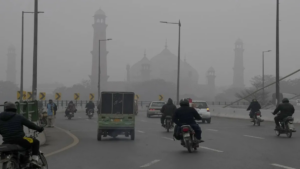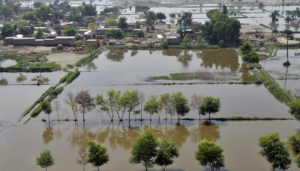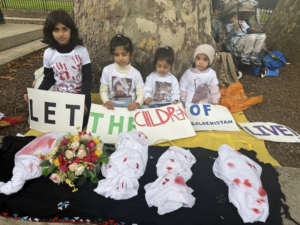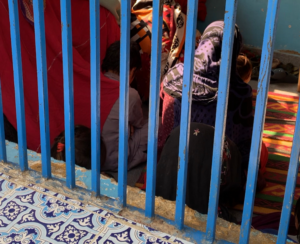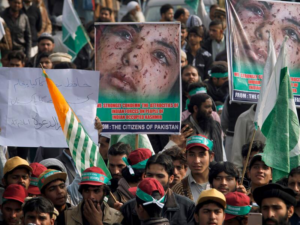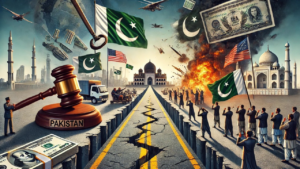
In the lexicon of developing economies, few narratives are as perplexing—and politically volatile—as the one currently unfolding in Pakistan.
The South Asian nation, long accustomed to cycles of boom and bust, finds itself at a moment of rare and fragile macroeconomic stability.
Inflation, though still burdensome, has eased from previous peaks.
The rupee has found its footing, interest rates are stabilising, and the government has secured another round of support from the International Monetary Fund (IMF).
Yet, despite these apparent signs of recovery, one key metric remains elusive: growth.
The paradox is stark. On paper, Pakistan’s economy has managed to avert collapse.
The spectre of default that loomed large in 2022 and 2023 has receded.
Foreign exchange reserves, once scraping the bottom of the barrel, have seen modest upticks thanks to IMF tranches, remittances, and support from friendly nations such as China and Saudi Arabia.
The fiscal deficit is being kept on a tight leash, and reforms—however half-hearted—are beginning to take shape.
Yet the economy is not growing in any meaningful sense.
In fact, it has been stagnating, with real GDP growth estimates for the fiscal year 2024 hovering between 1.5% and 2.5%—far below the 5% to 7% required to absorb Pakistan’s burgeoning youth population into the labour force.
This contradiction underscores a troubling reality.
Stabilisation in Pakistan has increasingly become synonymous with economic suppression.
The policies implemented to maintain macroeconomic order—such as high interest rates, subsidy cuts, fiscal austerity, and import compression—have effectively sapped the economy of its momentum.
Investment remains anaemic, both domestic and foreign. Industrial output is stifled. Consumers, battered by years of inflation and political turmoil, are hesitant to spend.
In many sectors, the private sector has simply chosen to wait out the storm rather than risk capital in a climate of uncertainty.
The government, under severe pressure to meet IMF conditionalities, has focused primarily on putting out fiscal fires.
Revenue collection has improved marginally, but not nearly enough to fund development.
The taxation regime remains regressive and skewed, with little political appetite to bring the powerful agricultural and real estate sectors into the net.
Meanwhile, energy sector circular debt continues to mount, even as prices are increased to comply with IMF mandates.
The result is a population paying more for electricity and gas while still suffering from rolling blackouts and service disruptions. It’s a formula that breeds discontent while doing little to fuel productivity.
Perhaps the most glaring casualty of Pakistan’s economic strategy has been investment.
Foreign direct investment (FDI), already modest in good years, has plummeted in the face of political instability, policy unpredictability, and chronic structural weaknesses.
The military’s increasing footprint in civilian economic matters, coupled with inconsistent regulation, has unnerved investors. Multinationals have been quietly exiting or downsizing operations, citing an inability to repatriate profits and navigate Pakistan’s byzantine bureaucratic apparatus.
Even domestic capital is fleeing to safer shores. Pakistanis are parking their wealth in Dubai, Malaysia, and elsewhere, where property markets offer both returns and refuge.
The Pakistani stock exchange, despite momentary rallies, reflects a deeper malaise: investor confidence is brittle, and capital markets remain shallow.
At the heart of the problem is a vision gap. Successive governments, both civilian and military-backed, have pursued short-term fixes without addressing the deep-seated issues hampering sustainable growth.
The obsession with “managing” the economy—often through administrative controls, stop-gap financing, and fiscal juggling—has come at the expense of building a competitive, productive, and export-oriented economy.
The country’s exports remain stuck in low-value-added textiles, with no significant push towards diversification.
Agriculture, once the bedrock of rural employment and food security, has been left to rot under policy neglect and climate-induced shocks.
Moreover, Pakistan’s labour market is in crisis. With over 60% of the population under the age of 30, the country should be in the midst of a demographic dividend.
Instead, it faces a demographic time bomb. Unemployment is rampant, particularly among educated youth.
Skilled professionals are increasingly opting to emigrate, a brain drain exacerbated by rising domestic insecurity and lack of opportunity.
Meanwhile, the informal sector continues to swell, offering subsistence at best and no path to upward mobility.
Political instability compounds the challenge. The aftermath of the 2024 general elections has left the country with a tenuous coalition government, vulnerable to both street agitation and establishment pressure.
Policy continuity is virtually non-existent, and bureaucratic inertia makes reform implementation an uphill battle.
In such an environment, long-term planning—so vital for infrastructure, education, health, and industry—takes a backseat to firefighting.
Furthermore, Pakistan’s external vulnerabilities remain acute. Despite IMF support and friendly loans, the country’s debt burden is unsustainable in the long run.
External repayments are rising just as global financial conditions tighten. The risk of a balance-of-payments crisis remains latent, and each new financing deal only kicks the can further down the road.
The country’s overreliance on bilateral support from Gulf nations and China also raises questions about sovereignty and strategic independence.
The shadow of climate change looms large, too.
The catastrophic floods of 2022 were a harbinger of future disasters, yet little has been done to climate-proof the economy.
Water scarcity, food insecurity, and extreme weather events are becoming more frequent, threatening livelihoods and further destabilising already vulnerable regions.
The juxtaposition of stability and stagnation is not just a technical issue—it is a political and social tinderbox.
For the average Pakistani, the narrative of stabilisation rings hollow when the kitchen table tells a different story.
Real incomes have eroded. The cost of living has soared. Public services are in disarray. Hope is in short supply. In such a context, stabilisation without growth risks losing legitimacy.
The state may balance its books, but the citizenry remains out of pocket. Pakistan’s economic paradox is therefore more than a contradiction of numbers—it is a reflection of a broader malaise. It reveals a system that prioritises survival over progress, management over transformation.

